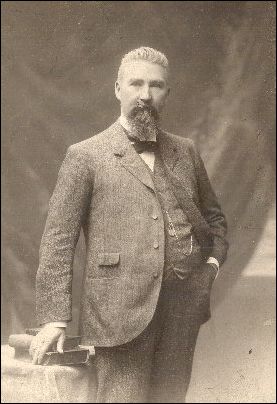Today, I visited the Reynolda House in Winston-Salem. Now a museum of American art this is open to the public, the Reynolda House was originally constructed in 1917 as a home for tobacco giant RJ Reynolds, his wife, and their four children.
Definitely visit, if you have the opportunity. The architecture is beautiful, and the house is full of fascinating artifacts – like early telephones, clothing from the 1910s – 1920s, furniture, an original elevator for guests to bring their trunks upstairs, and of course, American art. Unfortunately, no pictures are allowed, so I have used some pictures from the Reynolda House website and other sites for this post.
This post is really about Mr. and Mrs. Reynolds. Richard Joshua (RJ) Reynolds was born in 1850 to a tobacco farmer. He struck out on his own and was a bachelor until 1905, when at the age of 55, he married Mary Katherine Smith, his second cousin and secretary.
Katherine seems to have been an unusually intelligent and decisive woman. Some aspects of her life make her seem as though she could have been a bit… overly-fastidious. More on that in a moment. After finishing her college degree, she went to work for RJ. It was due to Katherine’s suggestions that RJ provided a number of innovations for the benefit of the factory workers, such as water fountains, lunch rooms, and even a nursery. She married RJ when she was 25 years old.
Despite the 30-year age difference between them, they seem to have been very happy together. Katherine bore four children: Richard Joshua, Jr. (called Dick), Mary Katherine, Nancy Susan, and Zachary Smith (called Smith).
Katherine also had ideas for their home, and she hired Charles Barton Keen to design a 70-room home with an open floor plan, to be situated on a 1,000 acre farm she and RJ owned. Katherine placed great emphasis on healthy living, which in the 1910s, meant a lot of fresh air and lack of clutter. So the home Keen designed included a number of porches (fresh air), a bathroom for each bedroom (hygiene), and a swimming pool (exercise). She seems to have been very involved with every aspect of the home design, and envisioned the large reception hall that is at the heart of the home today, with its pipe organ and dual winding staircases on either side of the great fireplace. Today, visitors can climb the stairs and observe the activity in the reception hall from the wrap-around balcony.
Our State has an interesting post about Reynolda House that gives us a window into Katherine’s character, which might be described as somewhat controlling. From their site: “Please see that the following directions are carried out to the letter,” she wrote in a memo to dairy workers in 1912. “Before commencing to milk, brush off all the cows. Milkers’ hands and cows’ udders must be washed with soap and water and rinsed before commencing to milk — one cow at a time just before milking her, of course.”
One thing struck me as very funny, which is that Katherine – and now the museum – refers to the home determinedly as a ‘bungalow’. For about 15 minutes in 1909, the term ‘bungalow’ did in fact, refer to a huge country home. However, a bungalow – as the rest of the world knows them – are typically 1.5 stories with 3 bedrooms. (Don’t you think it was wrong of Charles Barton Keen to let Katherine go on talking about her house as a “bungalow”, when he must have known better and could have easily set her straight? Thanks to him, she may have been the laughingstock of bungalow enthusiasts everywhere.)
In 1917, after eight years of construction, Reynolda House was complete. But RJ, now 67, was never to enjoy the huge English study his wife had designed for him. He became very ill. When the family moved into their new home, the study was converted into a sick room. Between hospital visits, RJ would return home and lay in bed, gazing out of the bay window.
When death came in July 1918, RJ was the richest man in North Carolina, and one of the best-loved. His fellow citizens grieved for him. He had been a generous man, willingly providing his workers with higher pay and shorter work hours than other businessmen.
Katherine was in much better shape than most young widows with four children, thanks to the enormous fortune RJ left behind. A little less than three years after RJ passed away, she remarried. Her second marriage was as different from her first as is possible. To begin with, J. Edward Johnston was younger than Katherine (they were 28 and 41, respectively). Also, he was a teacher, not a tycoon. Apparently, there’s a significant pay differential.
Katherine wanted her new husband to find a better-paying profession, so he went into banking. This necessitated a short-term move to New York, where their first child together was born prematurely. It was a daughter, who lived only one day. They returned to Reynolda, but soon – against the advice of her doctor – Katherine became pregnant. She moved back to New York, where she gave birth to a healthy boy. Katherine died of an embolism, three days after her son’s birth. She had survived RJ by just six years.
In later years, Katherine’s children and grandchildren came into possession of the Reynolda estate, and over time, some wonderful additions and improvements were made. However, the sad irony is that the man whose wealth funded this lovely home, and the woman whose exacting requirements made it a reality, never had an opportunity to truly enjoy it.







